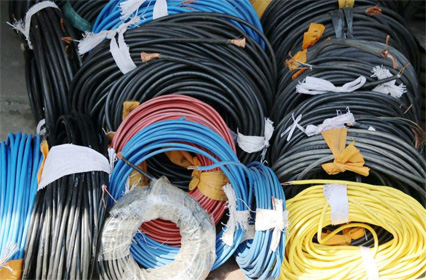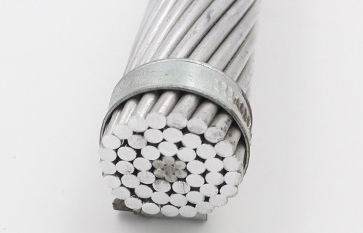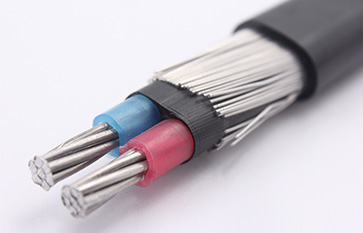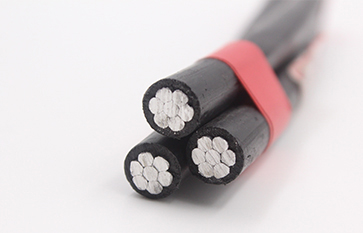The difference between cable and wire
There is no strict line between wire and cable. Wire is a product with small core number, small diameter and simple structure. Bare wire have only conductors without insulating and sheath.The other is the cable.;The conductor section area of the large wire is larger (more than 6 square millimeters), the conductor section area of the small wire is smaller (less than or equal to 6 square millimeter), and the insulated wire is also called the cloth wire. A wire is made up of one or more soft wires
There is no strict line between "wire" and "cable". Wire is a product with small core number, small diameter and simple structure. Bare wire have only conductors without insulating and sheath.The other is the cable.;The conductor section area of the large wire is larger (more than 6 square millimeters), the conductor section area of the small wire is smaller (less than or equal to 6 square millimeter), and the insulated wire is also called the cloth wire.
A wire is made up of one or more soft wires with a soft layer of outer bread; the cable is made up of one or several insulated wires, and the outside is wrapped in a tough outer layer of metal or rubber. Cables and wires are generally composed of core wire, insulated Baopi and protective skin
The characteristics of common cables are as follows:
CEF——Ethylene-propylene rubber insulated neoprene sheath, marine flame-retardant power cable.
CVV——Polyvinyl chloride sheathed marine flame retardant power cable
Oxygen tank wire often use BV, BX, RV, RVV series of wires, which: BV - copper core polychloroethylene Xi insulated wire, long allowed temperature 65 degrees C, the lowest temperature -15 C, working voltage AC 500V, DC 1000V, fixed applied indoors, outside, can be clearly applied and dark compress.
BX——Copper-cored rubber insulated wire, the maximum use temperature of 65 degrees Celsius, applied indoors. RV - polychloroethylene Xi insulated single core soft wire, the maximum use temperature 65 C, minimum operating temperature -15 C, working voltage AC 250V, DC 500V, used as the internal wiring of instruments and equipment.
RVV——Copper core PVC insulated and sheath soft wire, allowing long-term working temperature of 105 degrees C, working voltage AC 500V, DC 1000V, used for damp, high mechanical protection, often moving and bending occasions. Actually, there is no strict limit between "wire" and "cable"
Cables generally have more than 2 layers of insulation, most of them are multi-core structure, winding on the cable disk, the length is generally greater than 100 meters. Wires are usually single-layer insulation, single-core, 100 meters a roll, wireless disk
Common types of cables: VV: PVC insulation (first V), PVC sheath (second V) YJV22: XLPE insulation (YJ), PVC sheath (V), steel strip cassette (22) with "ZR" or "FR" for flame retardant cables (wires).
The model with "L" as aluminum wire is simpler: BVV-PVC insulated and sheathed copper core wire, BV-PVC insulated copper core wire, BYJ-copper crosslinked polyolefin insulated wire, BVR-PVC insulated copper core soft wire, BX-rubber insulated copper core wire, RHF-chloroprene rubber sheathed copper core soft wire.
(1)The small diameter is called the "line"; the large diameter is called the "cable".
(2)A simple structure is called a cable; a complex structure is called a cable.
But with the expansion of the scope of use, many varieties of "cable in the line", "cable wired". So there is no need to distinguish strictly.
In daily habits, people call household wires electric wires, and power cables for short.
1、There is a difference in material. The cable is made of metal (mostly copper, aluminum), and the cable is made of glass fiber as a conductor.
2、 There are differences in transmission signals. Cables transmit electrical signals. Optical cable is transmitted without signal.
3\The scope of application is different. Cables are mostly used for energy transmission and low-end data transmission (such as telephone). Optical cables are mostly used for data transmission.
Zhengzhou Sitong Cable Co.Ltd. is founded by one of the most professional manufacturers. Our main products include PVC insulated cable&wire ,0.6/1-26/35kv XLPE insulated power cables,Concentric cables,Aerial Bundle Cable(ABC Cable),Overhead insulated cables,General rubber sheath flexible cable,Rubber sheath flexible cable for mining,welding cables,Service Drop(Single,duplex,triplex,quadruplex),AAC,ACSR,AAAC,Polyester enameled round copper wrie,Guy wire,Flame Retardant Cable,Fire Retardant Cable,Smoke halogen-free cable,etc.In addition,we have the capacity to design and produce all kinds of wires and cables according to your special requirements.








